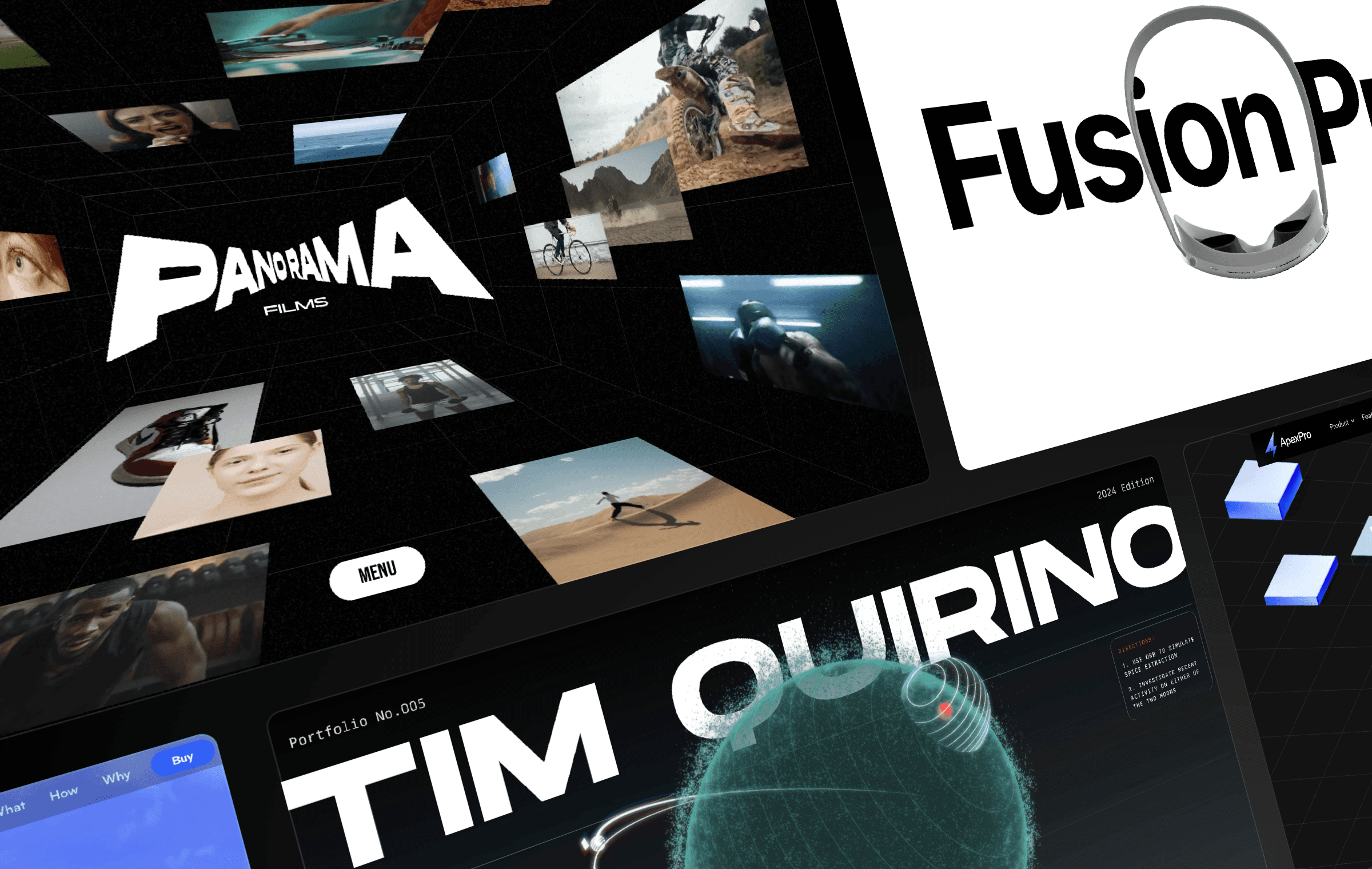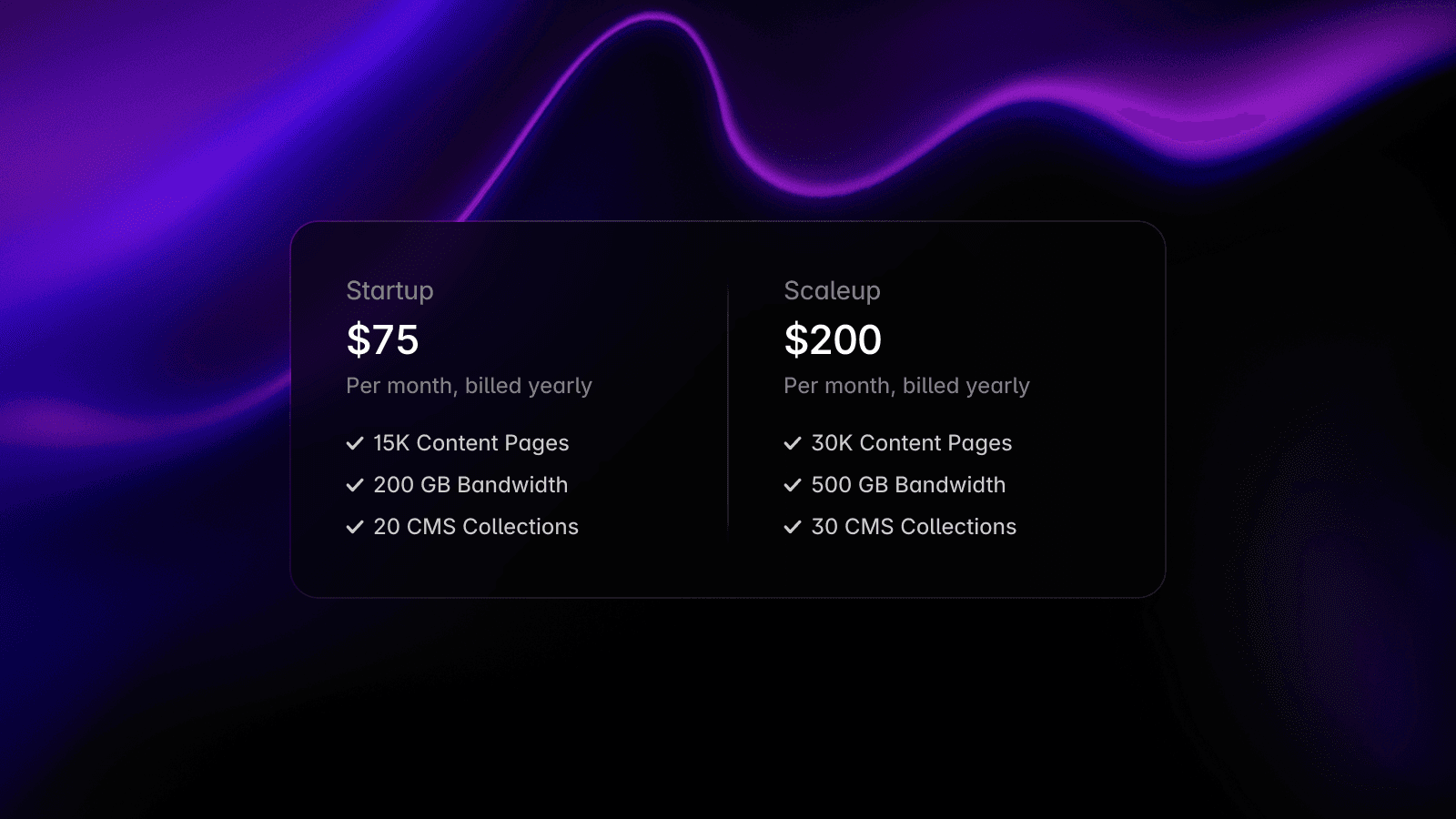


If you’re looking for a powerful website builder, you’ve likely come across both Framer and Webflow. These two platforms are among the most popular tools for designing and publishing websites, but they cater to different needs. In this guide, we’ll compare features, scalability, security, publishing, pricing, and best use cases for both platforms to help you choose the best fit.
Feature Comparison
Feature Framer Webflow Ease of Use Intuitive, no-code, design-first Steeper learning curve, requires manual structuring Design Flexibility Full creative control, interactive animations Advanced, but structured layout constraints CMS Fully scalable, dynamic filtering, localization support Robust CMS with complex content structuring Publishing & Hosting One-click publish, global CDN, staging environment Requires manual setup, hosting add-ons SEO Features Automated meta titles, schema markup, indexing rules SEO tools available, but require manual setup E-commerce Support Limited Full e-commerce functionality Collaboration Live collaboration, role-based permissions No real-time collaboration Security & Compliance SOC 2 Type 2, ISO 27001, GDPR SOC 2 Type 2 compliance
Ease of Use
Framer provides a true design-first approach, where what you design is what you publish instantly.
Webflow requires knowledge of HTML, CSS, and CMS structuring, making it more complex for beginners.
Verdict: If you want instant publishing and a no-code experience, Framer wins. If you need manual structuring of elements, Webflow is a better choice.
Design & Flexibility
Framer allows unlimited design freedom, animations, and micro-interactions without complexity.
Webflow is structured and gives designers developer-level control over CSS properties.
Verdict: If you want a Figma-like experience where everything is visual and interactive, Framer is better. If you want more hands-on control over CSS structuring, Webflow wins.
CMS & Content Management
Framer’s CMS is fully scalable, dynamic, and built for marketing teams with localization, filtering, and automation.
Webflow’s CMS is structured but requires more setup for dynamic use cases.
Verdict: If you need a flexible, scalable CMS with less manual work, Framer is the stronger choice. If you need precise manual structuring, Webflow is a good fit.
SEO & Performance
Framer automates SEO with meta titles, schema markup, and global SEO rules.
Webflow requires manual SEO setup, offering powerful options but without built-in automation.
Verdict: If you want built-in SEO optimization, Framer wins. If you prefer full manual SEO control, Webflow is the better choice.
Security & Scalability
Both Framer and Webflow are SOC 2 Type 2 compliant, ensuring enterprise-level security.
Framer also includes ISO 27001 and GDPR compliance, providing additional global security assurances.
Verdict: Both platforms offer strong security, but Framer has a slight edge in compliance and ease of scalability.
Pricing
Both platforms offer free plans, but pricing structures vary.
Plan Framer Free Plan Yes, with Framer branding Yes, with Webflow branding Basic €15/month (custom domain, SEO, staging) $14/month (limited features, no CMS) Pro €30/month (10,000 pages, full CMS, localization) $23/month (fewer CMS features, no built-in AI tools) Startup €75/month (ideal for teams, scaling capabilities) No direct equivalent (requires Business plan + add-ons) Scaleup €200/month (higher limits, advanced features) No built-in equivalent (Enterprise custom pricing required) Enterprise Custom pricing (SOC 2, ISO 27001) Custom pricing, with extra fees for security & scaling
Framer includes hosting, staging, and localization support in its pricing.
Webflow requires additional setup and add-ons for advanced features.
Who Should Use Each Platform?
Choose Framer if:
You want a fully interactive, high-performance website.
You need instant publishing, staging environments, and real-time collaboration.
You prioritize scalability, automation, and localization support.
You require enterprise-grade security and compliance (SOC 2 Type 2, ISO 27001, GDPR).
You want a powerful, scalable CMS with automation.
Choose Webflow if:
You need manual control over HTML, CSS, and CMS structures.
You require advanced CMS customization and developer workflows.
You’re comfortable with manual SEO and performance optimizations.
You prefer Webflow’s structured approach to layout design.
Final Verdict
Both Framer and Webflow are top-tier website builders, but they cater to different audiences:
For designers, businesses, and teams that need speed, scalability, and automation → Framer is the best choice.
For developers and structured content-heavy sites that require deep manual customization → Webflow offers more technical control.
Feature Comparison
Feature Framer Webflow Ease of Use Intuitive, no-code, design-first Steeper learning curve, requires manual structuring Design Flexibility Full creative control, interactive animations Advanced, but structured layout constraints CMS Fully scalable, dynamic filtering, localization support Robust CMS with complex content structuring Publishing & Hosting One-click publish, global CDN, staging environment Requires manual setup, hosting add-ons SEO Features Automated meta titles, schema markup, indexing rules SEO tools available, but require manual setup E-commerce Support Limited Full e-commerce functionality Collaboration Live collaboration, role-based permissions No real-time collaboration Security & Compliance SOC 2 Type 2, ISO 27001, GDPR SOC 2 Type 2 compliance
Ease of Use
Framer provides a true design-first approach, where what you design is what you publish instantly.
Webflow requires knowledge of HTML, CSS, and CMS structuring, making it more complex for beginners.
Verdict: If you want instant publishing and a no-code experience, Framer wins. If you need manual structuring of elements, Webflow is a better choice.
Design & Flexibility
Framer allows unlimited design freedom, animations, and micro-interactions without complexity.
Webflow is structured and gives designers developer-level control over CSS properties.
Verdict: If you want a Figma-like experience where everything is visual and interactive, Framer is better. If you want more hands-on control over CSS structuring, Webflow wins.
CMS & Content Management
Framer’s CMS is fully scalable, dynamic, and built for marketing teams with localization, filtering, and automation.
Webflow’s CMS is structured but requires more setup for dynamic use cases.
Verdict: If you need a flexible, scalable CMS with less manual work, Framer is the stronger choice. If you need precise manual structuring, Webflow is a good fit.
SEO & Performance
Framer automates SEO with meta titles, schema markup, and global SEO rules.
Webflow requires manual SEO setup, offering powerful options but without built-in automation.
Verdict: If you want built-in SEO optimization, Framer wins. If you prefer full manual SEO control, Webflow is the better choice.
Security & Scalability
Both Framer and Webflow are SOC 2 Type 2 compliant, ensuring enterprise-level security.
Framer also includes ISO 27001 and GDPR compliance, providing additional global security assurances.
Verdict: Both platforms offer strong security, but Framer has a slight edge in compliance and ease of scalability.
Pricing
Both platforms offer free plans, but pricing structures vary.
Plan Framer Free Plan Yes, with Framer branding Yes, with Webflow branding Basic €15/month (custom domain, SEO, staging) $14/month (limited features, no CMS) Pro €30/month (10,000 pages, full CMS, localization) $23/month (fewer CMS features, no built-in AI tools) Startup €75/month (ideal for teams, scaling capabilities) No direct equivalent (requires Business plan + add-ons) Scaleup €200/month (higher limits, advanced features) No built-in equivalent (Enterprise custom pricing required) Enterprise Custom pricing (SOC 2, ISO 27001) Custom pricing, with extra fees for security & scaling
Framer includes hosting, staging, and localization support in its pricing.
Webflow requires additional setup and add-ons for advanced features.
Who Should Use Each Platform?
Choose Framer if:
You want a fully interactive, high-performance website.
You need instant publishing, staging environments, and real-time collaboration.
You prioritize scalability, automation, and localization support.
You require enterprise-grade security and compliance (SOC 2 Type 2, ISO 27001, GDPR).
You want a powerful, scalable CMS with automation.
Choose Webflow if:
You need manual control over HTML, CSS, and CMS structures.
You require advanced CMS customization and developer workflows.
You’re comfortable with manual SEO and performance optimizations.
You prefer Webflow’s structured approach to layout design.
Final Verdict
Both Framer and Webflow are top-tier website builders, but they cater to different audiences:
For designers, businesses, and teams that need speed, scalability, and automation → Framer is the best choice.
For developers and structured content-heavy sites that require deep manual customization → Webflow offers more technical control.
Feature Comparison
Feature Framer Webflow Ease of Use Intuitive, no-code, design-first Steeper learning curve, requires manual structuring Design Flexibility Full creative control, interactive animations Advanced, but structured layout constraints CMS Fully scalable, dynamic filtering, localization support Robust CMS with complex content structuring Publishing & Hosting One-click publish, global CDN, staging environment Requires manual setup, hosting add-ons SEO Features Automated meta titles, schema markup, indexing rules SEO tools available, but require manual setup E-commerce Support Limited Full e-commerce functionality Collaboration Live collaboration, role-based permissions No real-time collaboration Security & Compliance SOC 2 Type 2, ISO 27001, GDPR SOC 2 Type 2 compliance
Ease of Use
Framer provides a true design-first approach, where what you design is what you publish instantly.
Webflow requires knowledge of HTML, CSS, and CMS structuring, making it more complex for beginners.
Verdict: If you want instant publishing and a no-code experience, Framer wins. If you need manual structuring of elements, Webflow is a better choice.
Design & Flexibility
Framer allows unlimited design freedom, animations, and micro-interactions without complexity.
Webflow is structured and gives designers developer-level control over CSS properties.
Verdict: If you want a Figma-like experience where everything is visual and interactive, Framer is better. If you want more hands-on control over CSS structuring, Webflow wins.
CMS & Content Management
Framer’s CMS is fully scalable, dynamic, and built for marketing teams with localization, filtering, and automation.
Webflow’s CMS is structured but requires more setup for dynamic use cases.
Verdict: If you need a flexible, scalable CMS with less manual work, Framer is the stronger choice. If you need precise manual structuring, Webflow is a good fit.
SEO & Performance
Framer automates SEO with meta titles, schema markup, and global SEO rules.
Webflow requires manual SEO setup, offering powerful options but without built-in automation.
Verdict: If you want built-in SEO optimization, Framer wins. If you prefer full manual SEO control, Webflow is the better choice.
Security & Scalability
Both Framer and Webflow are SOC 2 Type 2 compliant, ensuring enterprise-level security.
Framer also includes ISO 27001 and GDPR compliance, providing additional global security assurances.
Verdict: Both platforms offer strong security, but Framer has a slight edge in compliance and ease of scalability.
Pricing
Both platforms offer free plans, but pricing structures vary.
Plan Framer Free Plan Yes, with Framer branding Yes, with Webflow branding Basic €15/month (custom domain, SEO, staging) $14/month (limited features, no CMS) Pro €30/month (10,000 pages, full CMS, localization) $23/month (fewer CMS features, no built-in AI tools) Startup €75/month (ideal for teams, scaling capabilities) No direct equivalent (requires Business plan + add-ons) Scaleup €200/month (higher limits, advanced features) No built-in equivalent (Enterprise custom pricing required) Enterprise Custom pricing (SOC 2, ISO 27001) Custom pricing, with extra fees for security & scaling
Framer includes hosting, staging, and localization support in its pricing.
Webflow requires additional setup and add-ons for advanced features.
Who Should Use Each Platform?
Choose Framer if:
You want a fully interactive, high-performance website.
You need instant publishing, staging environments, and real-time collaboration.
You prioritize scalability, automation, and localization support.
You require enterprise-grade security and compliance (SOC 2 Type 2, ISO 27001, GDPR).
You want a powerful, scalable CMS with automation.
Choose Webflow if:
You need manual control over HTML, CSS, and CMS structures.
You require advanced CMS customization and developer workflows.
You’re comfortable with manual SEO and performance optimizations.
You prefer Webflow’s structured approach to layout design.
Final Verdict
Both Framer and Webflow are top-tier website builders, but they cater to different audiences:
For designers, businesses, and teams that need speed, scalability, and automation → Framer is the best choice.
For developers and structured content-heavy sites that require deep manual customization → Webflow offers more technical control.

Step into the future of design
Join thousands using Framer to build high-performing websites fast.








